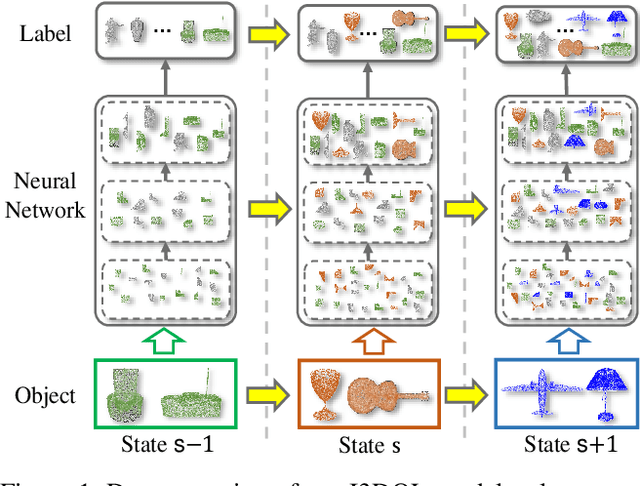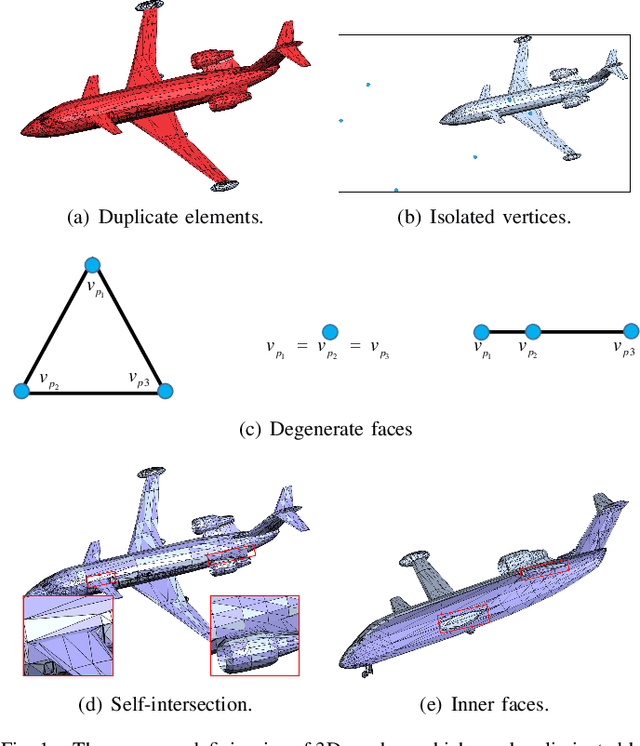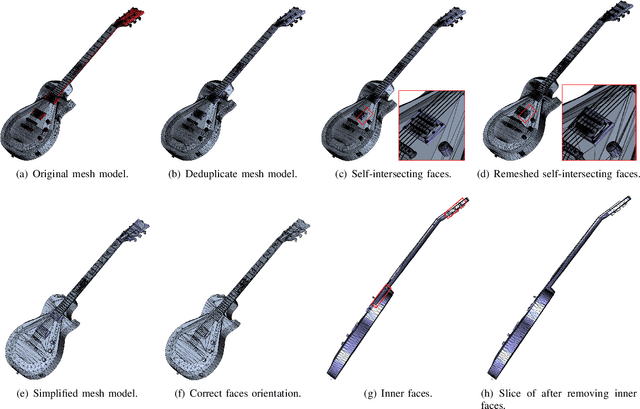Bingtao Ma
I3DOL: Incremental 3D Object Learning without Catastrophic Forgetting
Dec 16, 2020



Abstract:3D object classification has attracted appealing attentions in academic researches and industrial applications. However, most existing methods need to access the training data of past 3D object classes when facing the common real-world scenario: new classes of 3D objects arrive in a sequence. Moreover, the performance of advanced approaches degrades dramatically for past learned classes (i.e., catastrophic forgetting), due to the irregular and redundant geometric structures of 3D point cloud data. To address these challenges, we propose a new Incremental 3D Object Learning (i.e., I3DOL) model, which is the first exploration to learn new classes of 3D object continually. Specifically, an adaptive-geometric centroid module is designed to construct discriminative local geometric structures, which can better characterize the irregular point cloud representation for 3D object. Afterwards, to prevent the catastrophic forgetting brought by redundant geometric information, a geometric-aware attention mechanism is developed to quantify the contributions of local geometric structures, and explore unique 3D geometric characteristics with high contributions for classes incremental learning. Meanwhile, a score fairness compensation strategy is proposed to further alleviate the catastrophic forgetting caused by unbalanced data between past and new classes of 3D object, by compensating biased prediction for new classes in the validation phase. Experiments on 3D representative datasets validate the superiority of our I3DOL framework.
An End-to-End Geometric Deficiency Elimination Algorithm for 3D Meshes
Mar 14, 2020


Abstract:The 3D mesh is an important representation of geometric data. In the generation of mesh data, geometric deficiencies (e.g., duplicate elements, degenerate faces, isolated vertices, self-intersection, and inner faces) are unavoidable and may violate the topology structure of an object. In this paper, we propose an effective and efficient geometric deficiency elimination algorithm for 3D meshes. Specifically, duplicate elements can be eliminated by assessing the occurrence times of vertices or faces, degenerate faces can be removed according to the outer product of two edges; since isolated vertices do not appear in any face vertices, they can be deleted directly; self-intersecting faces are detected using an AABB tree and remeshed afterward; by simulating whether multiple random rays that shoot from a face can reach infinity, we can judge whether the surface is an inner face, then decide to delete it or not. Experiments on ModelNet40 dataset illustrate that our method can eliminate the deficiencies of the 3D mesh thoroughly.
 Add to Chrome
Add to Chrome Add to Firefox
Add to Firefox Add to Edge
Add to Edge